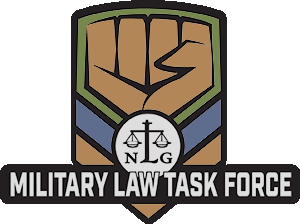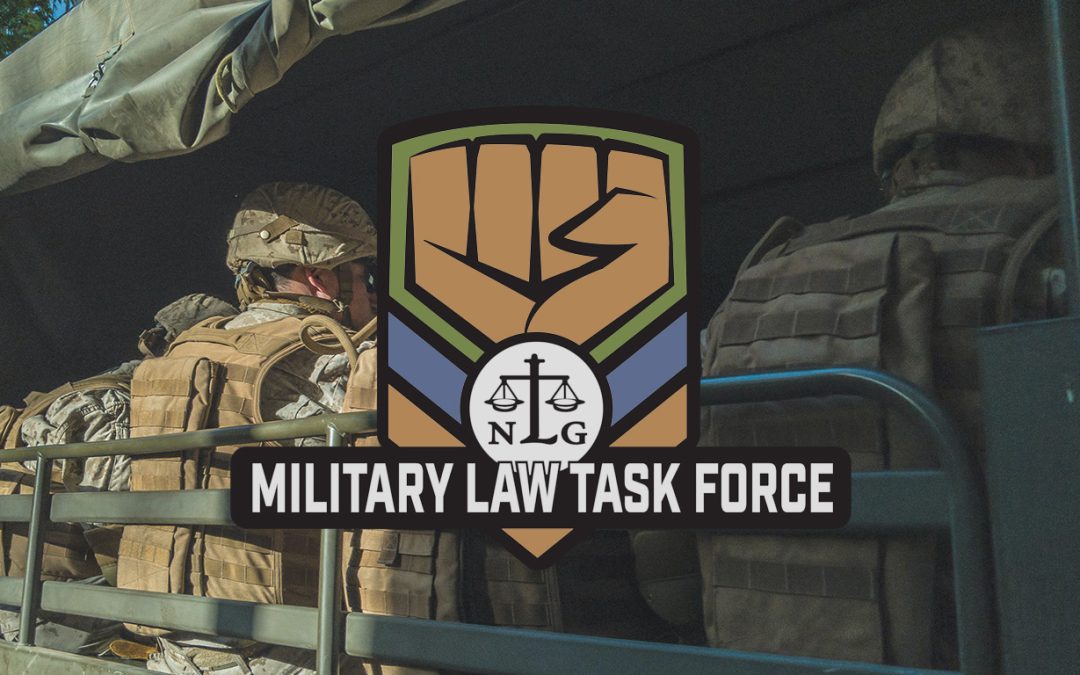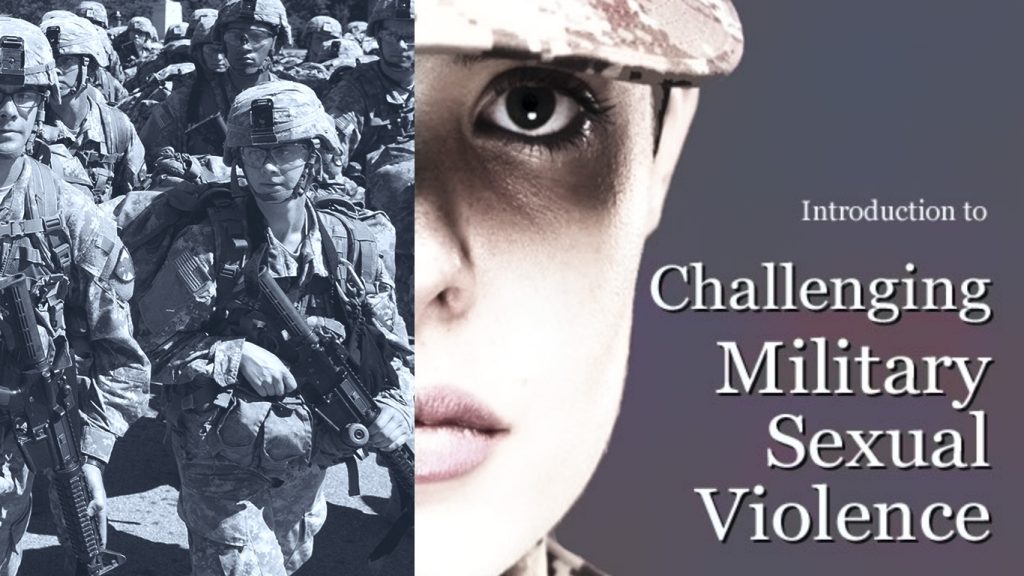BY EDWARD HASBROUCK
The National Commission on Military, National, and Public Service (NCMNPS)1 has released its final report2, recommending inter alia that Congress expand Presidential authority to order registration with the Selective Service System to include women as well as men.
A bill (H.R. 6415) was introduced immediately after the release of the NCMNPS report to implement all of its legislative recommendations3, including subjecting women to draft registration, while a bill (H.R. 5492) to repeal the Military Selective Service Act4, introduced earlier, remains pending as an alternative.
This puts the future of the Selective Service System, including whether to end draft registration or extend it to women as well as men, squarely on the agenda for imminent Congressional action.
In 2016, Congress bought four years of delay by appointing the NCMNPS to study the question. Now, Congress can’t put off a decision much longer without having it taken out of its hands, embarrassingly, by the courts. On March 3, 2020, the 5th Circuit Court of Appeals heard oral argument in National Coalition for Men v. SSS.5 Oral argument (by telephone) on a motion for class certification in another case challenging the constitutionality of requiring only men to register for the draft, Kyle-Labell v. SSS, is scheduled for June 25, 2020, in U.S. District Court in New Jersey6. Appeals can delay a final judgment, but a final ruling upholding the District Court judgment in NCFM v. SSS, or a similar ruling in another case, would force Congress to accept a court-ordered end to draft registration, try to expand draft registration to women, or repeal the registration requirement entirely.
Congress might not make its decision until after the 2020 elections or after the new Congress convenes in early 2021. But the NCMNPS is already urging7 Congress to incorporate at least some of its recommendations into amendments to the National Defense Authorization Act (NDAA) for Fiscal Year 20218, which was already near the top of the Congressional calendar when it was preempted by the COVID-19 pandemic. Congress could hold hearings on H.R. 6415 and H.R. 5492 after it resumes normal activities.9 But it is also possible that Congress could take up this issue earlier, during expedited consideration of the FY 2021 NDAA, with no hearings (using as its excuse the pandemic and that the NCMNPS already held hearings), no further warning, and little debate. On June 11, 2020, without hearings, the Senate Armed Service Committee approved a first draft of the FY 2021 NDAA. The full text of this bill was not yet available at press time, but the summary released by the Committee does not mention Selective Service.10 The next news we get about this issue could be that an amendment to the FY 2021 NDAA expanding draft registration to women has been introduced during a markup session or on the House or Senate floor, or is scheduled for a vote the next day.
These developments have been visible in our headlights for years. The time is overdue for grassroots organizing, preparation for draft resistance and support of resisters (including, but not limited to, legal support), and lobbying Congress to reign in war planning by putting an end to contingency planning and preparations for any sort of draft.
WHAT DID THE NCMNPS RECOMMEND?
The NCMNPS made recommendations in three areas: the Selective Service System (compulsory military service); the all-volunteer force (military recruiting, enlistment, retention, etc.); and civilian voluntary national and public service.
My focus below is on the Selective Service System. A separate article in this issue of “On Watch” addresses the NCMNPS recommendations with respect to the AVF and military recruiting.
With respect to the Selective Service System, the NCMNPS recommended11 (in my summary outline, not that of the NCMNPS) as follows:
- Retain the current Selective Service System and contingency planning for a military draft, unchanged except as noted below.
- Retain the current Selective Service registration system, requirements, and sanctions for nonregistration.
- Expand registration to (young) women as well as (young) men.
- Allow people who are denied benefits because they didn’t register for the draft a 30-day window to restore eligibility by registering, regardless of age (i.e. even if they are age 26 or older, and no longer required to register, they would be allowed to register without penalty within 30 days of denial of a benefit on the basis of not having registered, and thereby restore eligibility).
- Do NOT add a box on the Selective Service registration form to allow registrants to indicate their intent to seek conscientious objector (CO) status if drafted. (This was explicitly considered by the NCMNPS, but rejected.)
- Have the SSS and the Pentagon conduct test exercises for activating a draft, but keep the results of those tests classified (in case they cast doubt on whether registration is useful or worth the costs), and make sure there is a public relations campaign to persuade the public that the test exercises don’t mean that an actual draft is imminent, and that they don’t catalyze antidraft sentiment or activism.
- Make draft registration into a “solemn” patriotic ritual and rite of passage.
- Retain and continue, but do NOT change or expand to other occupational or skill categories, contingency planning by the Selective Service System for the Health Care Personnel Delivery System (HCPDS).12 (The NCMNPS was specifically directed by Congress to study and report on the HCPDS and whether it should be modified and/or expanded to other categories of occupational skills.)
The NCMNPS report notes that there was disagreement within the NCMNPS regarding some of its recommendations, particularly whether to expand draft registration to women. But there was no dissenting or minority report. In response to my FOIA requests the NCMNPS has neither released nor admitted the existence of any records of votes on recommendations by the members of the NCMNPS.
Much of the report is concerned with civilian national service, although the raison-d’être of the NCMNPS was to deal with military issues, especially that of women and Selective Service. The civilian service proposals seem the least likely to be deemed “essential” or to be enacted. It’s possible that they were included as a quid pro quo in exchange for support for the military elements of the report. Unless they are folded into some sort of COVID-19 pandemic “new WPA” or “new CCC” jobs program, I think they are likely to get left on the cutting-room floor of Congressional compromises.
WHAT DID THE NCMNPS EXCLUDE FROM ITS TERMS OF DEBATE?
Enforcement is the Achilles’ heel of any system of conscription. In my testimony13 to the NCMNPS hearings a year ago, I told the members of the NCMNPS:
Any proposal that includes a compulsory element is a naïve fantasy unless it includes a credible enforcement plan and budget…. How much are you prepared to spend, and how much of a police state are you prepared to set up, to round up millions of draft registration law violators or enforce a draft?
As for women, is there any reason to think that they will be more willing to provide the government with the information needed to conscript them than men have been? No, just the reverse. Both feminist and anti-feminist women will be more likely to resist being forced into the military than men have been, and more people will support them in their resistance.
The NCMNPS’s recommendations are just such a naïve fantasy, completely unfeasible and with no foundation in research or reality. The NCMNPS kept its head firmly in the sand, carefully avoiding any inquiry into whether or how the current (unenforced and widely violated) registration requirement for men, much less an expanded registration requirement applicable also to women, could be enforced.
There’s no mention at all in the report’s 255 pages of compliance or noncompliance with draft registration. There’s been no audit of the registration database since 1982, and the NCMNPS didn’t conduct or ask for one.
There’s no plan or budget in the NCMNPS report for enforcement of the current, or an expanded, draft registration requirement. The Department of Justice is, and would remain, responsible for enforcement of the registration requirement.14 But nobody has been prosecuted for nonregistration since 1986, and since then, as I pointed out in my testimony, “the Department of Justice – conspicuously absent from the witness list for these hearings – has made neither any estimate of the numbers of violators nor any plan or budget for how to identify, investigate, find, arrest, prosecute, or incarcerate them.”
According to NCMNPS responses to my FOIA requests15, the preliminary report the NCMNPS received from the Department of Justice didn’t mention enforcement, and the NCMNPS didn’t bother to follow up with the DOJ about the omission. The NCMNPS never met with the DOJ, and didn’t call any witnesses from the DOJ to testify at its hearings. When NCMNPS staff convened an inter-agency working group of representatives from 25 other agencies and departments to consult on possible recommendations, the DOJ wasn’t invited. The members of the NCMNPS went to extreme lengths to avoid asking any questions about compliance, noncompliance, enforcement, or feasibility – because they knew that even cursory inquiries into these questions would make clear that draft registration of men has failed, and that trying to register women would be even more of a failure.
According to a statement16 in response to the NCMNPS report from peace and antidraft organizations and activists including the Military Law Task Force of the National Lawyers Guild:
“The issue is not whether women should have to register for the draft, but whether the government should be planning or preparing to draft anyone.
“Congress should end draft registration for all, not try to expand it to young women as well as young men.
“H.R. 5492 would end the current contingency planning for a future draft as well as draft registration, and would end all sanctions against those who didn’t register. That’s the appropriate choice for Congress and the American public.
“The NCMNPS was directed by Congress to consider the “feasibility” of any draft. But registering or drafting women would not be feasible in the face of the likely widespread noncompliance. Women and men will join in resistance to any attempt to expand draft registration, or plans for a draft, to women.
“Draft registration for men failed: criminal enforcement had to be abandoned decades ago in the face of pervasive noncompliance. Even the former Director of the Selective Service System testified to the NCMNPS that the current Selective Service System database is “less than useless” as the basis for a draft. Trying to draft women or get them to register to be drafted would be even more of a fiasco.
“Making contingency plans for a draft that would include women would be an exercise in self-delusion by the Selective Service System and military planners. Even more women than men would resist if the government tried to draft them.”
WHAT WILL HAPPEN NEXT? WHAT CAN WE DO?
In Congress, ask members of the House to co-sponsor and support H.R. 5492 (to abolish the Selective
Service System), and ask members of the Senate to introduce a similar bill. If hearings are to be held on H.R. 6415 (to implement the NCMNPS recommendations) or in the Senate on the NCMNPS recommendations, ask members of the Armed Services Committees to insist on full and fair hearings at which both H.R. 6415 and H.R. 5492 are considered as alternatives; antiwar and antidraft witnesses are called as well as witnesses in support of continuing or expanding draft registration; and compliance predictions and enforcement plans are an explicit part of the hearing agenda.
Don’t let the debate be framed as whether to register men only, or both men and women, for the draft. Insist that the option of “none of us” be considered as well as that of “all of us”.
Insist that DOJ witnesses be called before Congressional hearings to explain their plan and budget (they have none) for rounding up, prosecuting, and imprisoning women who refuse to register, given that they have given up trying to do enforce criminal penalties against men who refuse to register.
Members of the MLTF may be especially well qualified to ask pointed questions, and to help frame questions for sympathetic members of Congress to ask, about the enforceability of an expanded draft registration requirement for women in the face of likely resistance and legal defenses.
But neither H.R. 6415 nor H.R. 5492 may even be considered by Congressional committees, especially during the COVID-19 pandemic when only those bills deemed most essential are being acted on.
In their first responses to questions from invited members of the press following the release of the NCMNPS final report17 on March 24-25, members of the NCMNPS conceded that their recommendations were unlikely (especially in the context of the pandemic) to be adopted as a package. Instead, they said, some key NCMNPS proposals would probably be put forward as part of, or as amendments to, other bills including the FY 2021 (to be enacted in late 2020) and/or FY 2022 NDAA.
Any proposed amendment or package of amendments to the NDAA based on the NCMNPS recommendations would be likely to include expansion of Selective Service registration to women.
At the same time, some members of the NCMNPS have suggested18 that its recommendations regarding funding for civilian voluntary “national service” jobs or other civilian programs – which might not be deemed germane to the NDAA – could be addressed separately as part of pandemic relief bills.
So messages to Congress should not be limited to support for H.R. 5492, but should also stress opposition to any amendment to the FY 2021 or FY 2022 NDAA that would extend draft registration to women, and urge instead that the provisions of H.R. 5492 be folded into an amendment to the NDAA.
In the streets, and in virtual fora during the pandemic, there’s an urgent need to raise awareness of the imminent threat to expand draft registration to women, and the current opportunity to end it for all.
It’s also critical to raise consciousness of how the perceived availability of a draft as the ultimate fallback for a war that escalates out of hand emboldens military planners of endless unlimited wars. The flip side of that, of course, is that by resisting registration and preventing a draft, young people and their allies (including, of course, lawyers and legal workers), can not only wield the power of direct action to protect themselves against being drafted, but can take a leading role in protecting us all from war. The ultimate decision about a draft will be made, as it always has been made, not by those who give the call-up orders but by how affected individuals and communities respond to those orders.
We need to let young people know that they are not alone, and that they have more choices – including choices of resistance – and more power over their own future – and ours – than government officials tell them. We need to encourage young people to speak up, help them organize among themselves and with allies, and amplify the voices of those – especially young women – who say they will resist. We need to let them know that the government is not omnipotent, that resistance is not futile, and that we will support and defend them against any attempt to enforce the Military Selective Service Act.
Four decades of spontaneous yet sustained youth resistance to draft registration, building on long legacy of draft resistance and youth and antiwar activism, have brought us to the brink of victory over the draft. This is one of the most important victories of the antiwar movement in the US during that period. Now is the time to put the final nail in the coffin of the Selective Service System, and by doing so, to rein in military planning for unlimited, endless wars.
Edward Hasbrouck is a legal worker in San Francisco with the Identity Project (PapersPlease.org). He has been a member of the NLG and the MLTF since the early 1980s, when he was an organizer with the National Resistance Committee and co-editor of Resistance News. He publishes a Web site about the draft, draft registration, draft resistance, and the Selective Service System at Resisters.info.
- The NCMNPS website is at <https://inspire2serve.gov>. For more on the NCMNPS, see <https://hasbrouck.org/draft/commission.html> .
- NCMNPS Final Report: <https://www.inspire2serve.gov/sites/default/files/finalreport/Final%20Report.pdf>. Text of recommended legislation: <https://www.inspire2serve.gov/sites/default/files/final–report/Legislative%20Annex.pdf>. Initial analysis and response to report: “National Commission recommends extending draft registration to women”, Edward Hasbrouck, March 24, 2020, <https://hasbrouck.org/blog/archives/002369.html>.
- H.R. 6415, “Inspire to Serve Act of 2020”, <https://www.congress.gov/bill/116th–congress/housebill/6415>.
- H.R. 5492, “To repeal the Military Selective Service Act, and thereby terminate the registration requirements of such Act and eliminate civilian local boards, civilian appeal boards, and similar local agencies of the Selective Service System”, <https://www.congress.gov/bill/116th–congress/house–bill/5492>. See analysis of the provisions of H.R. 5492 by Edward Hasbrouck, “Bill introduced to end draft registration”, <https://hasbrouck.org/blog/archives/002363.html>. No legislation comparable to either H.R. 6415 or H.R. 5492 has been introduced yet in the Senate.
- See my report from the oral argument, “Appeals Court hears arguments on the Constitutionality of draft registration”, March 5, 2020, <https://hasbrouck.org/blog/archives/002365.html>.
- This motion was fully briefed in August 2019. The government asked the court to dismiss the case or postpone a decision until after the report of the NCMNPS. The court denied those motions, but in practice waited for the NCMNPS report before hearing arguments or making any further rulings. See links to dockets and updates on both of these cases at <https://hasbrouck.org/draft/links.html#othercourts>.
- Joint letter from Chairs and Co-Chairs of National Commissions including the NCMNPS to the House and Senate Armed Services Committees, May 7, 2020, <https://www.inspire2serve.gov/_api/files/503>. This letter relates to other NCMNPS recommendations, not those on Selective Service. But if any of the NCMNPS recommendations are proposed for enactment as part of the NDAA, the recommendations on Selective Service are likely to be included.
- H.R. 6395, <https://www.congress.gov/bill/116th–congress/house–bill/6395>.
- A hearing before the Subcommittee on Military Personnel of the senate Armed Services Committee on the NCMNPS report and recommendations, at which only members of the NCMNPS were to testify, had been scheduled for March 31, 2020, but was postponed indefinitely due to the pandemic. <https://www.armedservices.senate.gov/hearings/20–03–31–final–recommendations–and–report–of–the–national–commission–onmilitary–national–and–public–service>.
- Press release from the Senate Armed Services Committee, June 11, 2020, <https://www.armedservices.senate.gov/press–releases/sasc–complete–markup–of–fiscal–year–2021–national–defense–authorizationact>; summary of SASC draft of FY2021 NDAA, <https://www.armedservices.senate.gov/imo/media/doc/FY%2021%20NDAA%20Summary.pdf>.
- For more details, see the summary and excepts from those portions of the report and recommendations related to the Selective Service System at <https://hasbrouck.org/draft/commission–report.html>.
- See description of the HCPDS and link to proposed HCPDS regulations at <https://hasbrouck.org/draft/health.html>.
- Statement to the NCMNPS, April 25, 2019, <https://hasbrouck.org/draft/Hasbrouck–NCMNPS–25APR2019final.pdf>.
- The difficulties that the DoJ would face – and, in the event, did face – in trying to enforce draft registration in the face of widespread noncompliance were anticipated in Congressional hearings in 1980 and 1982. “Judiciary implications of draft registration – 1980, 96th Congress, 2nd session, April 14 and May 22, 1980”; available at <http://hdl.handle.net/2027/pur1.32754077953648>. “Selective Service Prosecutions – 1982, 97th Congress, 2nd session, July 28, 1982”; available at <http://hdl.handle.net/2027/pur1.32754075288385 >. Those hearings provide a road map to lessons that weren’t heeded, and to questions about enforceability that could and should be asked at any hearings today on continuing or expanding draft registration, as I discussed in my initial written submission to the NCMNPS, April 18, 2018, <https://hasbrouck.org/draft/Hasbrouck–NCMNPS19APR2018.pdf>.
- See index to FOIA requests and responses at <https://hasbrouck.org/draft/commission-foia.html>.
- “News Advisory: Anti-draft activists call on Congress to end draft registration in response to court case on Selective Service and report of National Commission on Military, National, and Public Service”, March 2020, <https://hasbrouck.org/draft/Antidraft-News-Advisory-MAR2020.pdf>.
- The law establishing the NCMNPS, as amended, required the NCMNPS to release its final report and recommendations no later than March 20, 2020. With the cavalier disregard for legal niceties that has characterized its operations, the NCMNPS chose to put off the carefully stage-managed release of its report until March 24 (Pacific Time), March 25 (Eastern Time). See FOIA request at <https://hasbrouck.org/draft/FOIA/NCMNPS-FOIA-20MAR2020.pdf>.
- “It’s time for America to invest in a national strategic reserve of talent”, Op-Ed by NCMNPS member Steve Barney (retired Navy judge advocate and former General Counsel of the Senate Armed Services Committee), TheHill.com, May 9, 2020, <https://thehill.com/blogs/congress-blog/politics/496920-its-time-for-america-toinvest-in-a-national-strategic-reserve>.



